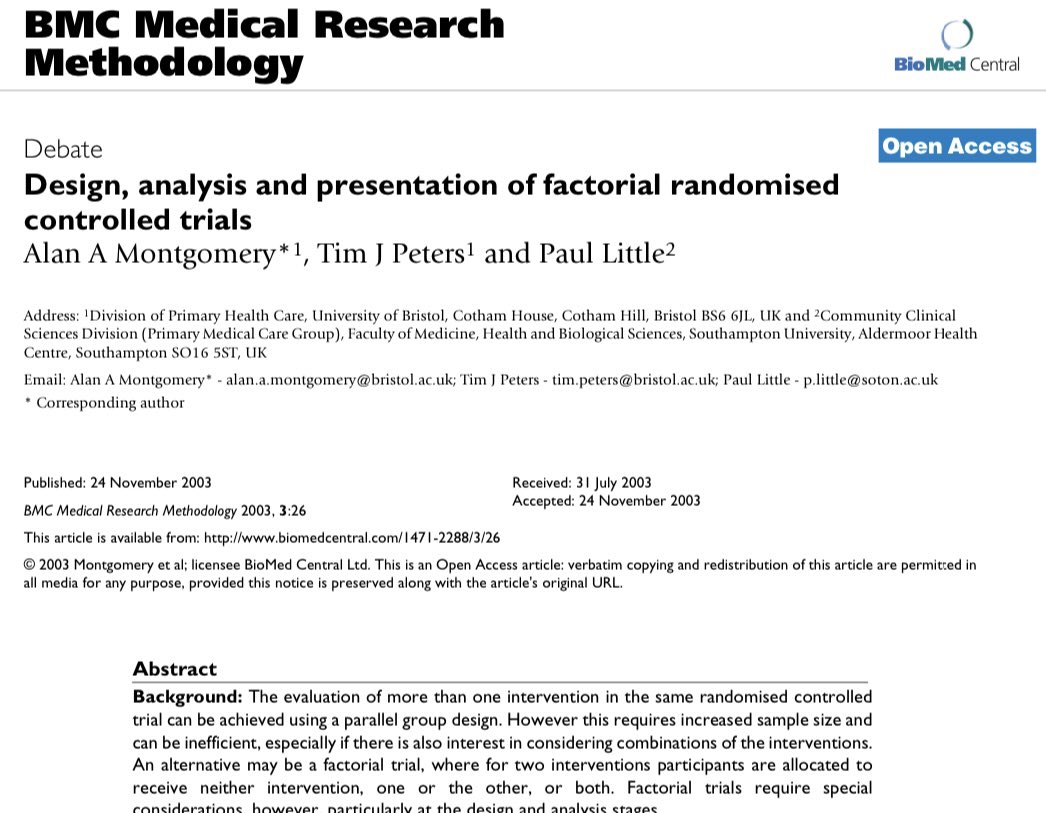While 1:1 randomisation to interventions is most common in clinical trials, sometimes #UnequalRandomisation is used. There are a number of factors that influence which randomisation ratio to use 1/9
#MethodologyMonday
#MethodologyMonday
One justification for unequal randomisation is when there is a substantial difference in cost of treatments. In this scenario, randomising unequally with fewer to the very expensive arm maximises efficiency when a trial has set resources 2/9
bmj.com/content/321/72…
bmj.com/content/321/72…

Another is if you are undertaking an early investigation of a new treatment and need to have greater insights into its underlying safety/benefit profile. Here, increasing allocation to the new treatment will provide greater precision around these estimates 3/9
However, moving away from 1:1 randomisation has consequences for trial power. Even moving from 1:1 to a 2:1 randomisation will require approx 12.5% more patients to retain the same statistical power and the % increases the greater the ratio adopted 4/9
A couple of reviews have highlighted the different rationales given by triallists for use of unequal randomisation 5/9
Review 1/ sciencedirect.com/science/articl…
Review 2/jclinepi.com/article/S0895-…

Review 1/ sciencedirect.com/science/articl…
Review 2/jclinepi.com/article/S0895-…


Unequal randomisation raises ethical issues, however, especially as more patients will need to be recruited to achieve equivalent power. Hey et al outline some of the issues and provides insights on when it may or may not be ethically justified 6/9
ncbi.nlm.nih.gov/pmc/articles/P…
ncbi.nlm.nih.gov/pmc/articles/P…

The growth of adaptive trials has seen more use of “response adaptive randomisation”which adapts the randomisation ratio over time in response to emerging data & weights the ratio in favour of the emerging better treatment. @remap_cap is a good example 7/9
remapcap.org/protocol-docum…
remapcap.org/protocol-docum…

The aim of response adaptive randomisation is that more patients get the likely better trt. This could theoretically break the blind though causing problems with the overall trial integrity. Effects may also oscillate esp early in a trial. Mitigations need to be in place 8/9
In any event, when any form of unequal randomisation ratio is used, it is essential that the rationale for the selected ratio is outlined in trial protocols & reports. The reviews flagged above show this is rarely done and needs improvement 9/9
• • •
Missing some Tweet in this thread? You can try to
force a refresh

 Read on Twitter
Read on Twitter









